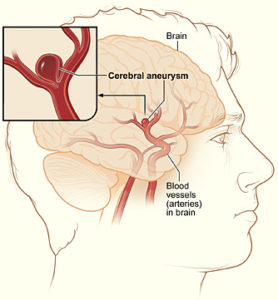1. What is stroke or Brain attack?
Stroke is a medical emergency that occurs when blood supply to the brain is reduced due to either blockage or leakage of the blood vessel resulting in damage of brain tissue.
2. How common is the stroke?
Stroke is very common and it is estimated to occur 1 out of 5 individuals and every 4 minutes one person gets affected by stroke. Annually more than 15 million people suffer from stroke and out of the 5.5 million people succumb to it, leaving rest to have variable disability.
In fact stroke is the leading cause of disability and second-leading common cause of death.
3. What are the types of strokes?
There are two types of strokes:
- Ischemic stroke (75%), caused by interruption or blockage of blood flow to brain.
- Hemorrhagic stroke (20%) is attributed to rupture of blood vessel leading to brain hemorrhage.
4. How to recognize Stroke symptoms?
Remember the pneumonic: BE FAST: Balance-Eye-Face-Arm-Speech-Time to rush
5. Does Stroke happen in the Heart?
Happens in Brain -Similar to heart attack its Brain attack.
6. Stroke happens only in old age?
Stroke can affect anyone and at any age
7. Stroke is irreversible?
Ischemic Stroke is reversible if treated within Golden hour either by giving CLOT BUSTING injection within 4.5 hours or by mechanical removal of the obstructed clot within 6 hours through endovascular procedure known as MECHANICAL THROMBECTOMY (Class 1 evidence for major vessel occlusion).
8. What is Golden hour stroke?
First six hours from the stroke onset is known as Golden hour and if treatment is initiated within this time than symptoms can be reversed completely or partially.
9. What is stroke ready hospital and do you know which is the stroke-ready hospital in your neighborhood?
It is mandatory to know your nearest STROKE READY HOSPITAL, which is equipped with 24 x365 (round the clock) availability of Neurologist, Neurosurgeon, Neuroradiologist and imaging facilities under one roof.
10. Are Neurosurgeons and Neurologists the same?
Both Neurosurgeons and Neurologists are medical doctors who are specialized and well trained in Neurology and treat patients who are suffering from nervous system disorders. However, Neurosurgeons perform surgery and Neurologists use therapeutic ways [medications] to treat and cure a disease condition.
11. How often should I visit Neurosurgeon?
Individuals who underwent neurosurgery should visit Neurosurgeon as directed or monthly once to check the progress of disease condition. Healthy individuals can also consult Neurosurgeon or Neurologist once in 2 years to check the status of the nervous system health condition.
12. Can Neurosurgeon in Bangalore treat a brain tumor?
Yes, if the brain tumor is severe and surgery is required to remove it, then the Neurosurgeon can perform surgery. If medications can treat a brain tumor, then the patient should consult a Neurologist.
13. Can Neurosurgeon cure Epilepsy?
Epilepsy is a central nervous system disorder that causes abnormal brain activity and leads to unusual behavior, loss of awareness, and loss of sensations. Any type of epilepsy can be diagnosed and treated by Neurologists. However, if a surgery is required to treat and cure Epilepsy, then Neurosurgeon can perform it.


 A cerebral aneurysm (additionally called an intracranial aneurysm or brain aneurysm) is a swelling, weakened territory in the wall of an artery in the brain, bringing about an abnormal extending, expanding, or bleb.
A cerebral aneurysm (additionally called an intracranial aneurysm or brain aneurysm) is a swelling, weakened territory in the wall of an artery in the brain, bringing about an abnormal extending, expanding, or bleb. 